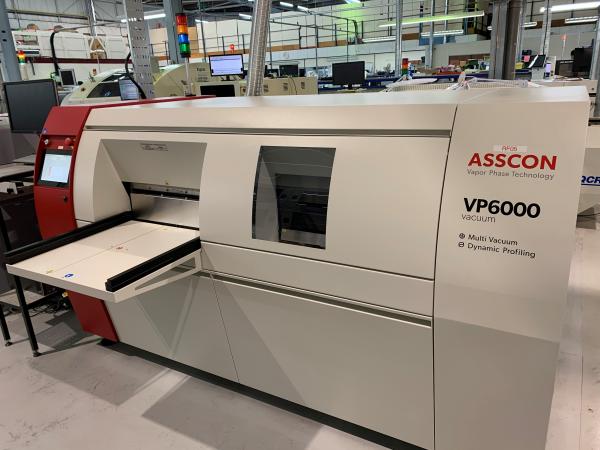Custom Interconnect Ltd installs an ASSCON VP6000 Vacuum Assisted Vapour Phase soldering system
Custom Interconnect Ltd installs an ASSCON VP6000 Vacuum Assisted Vapour Phase Soldering System

As part of CIL’s on-going investment plan to support its current and future customer demands it has invested in an ASSCON VP6000 system. Increasingly CIL are seeing demands for power electronics in the Automotive BEV and LED markets where solder joints with less than 1% voiding rates are required. After running multiple trials on its existing 4 off 10 zone Nitrogen / Air reflow ovens CIL found for some very high power applications the voiding could not be reduced to acceptable levels. Fields of applications for this technology that CIL are involved in include
- Soldering of power modules for multiple applications
- High frequency applications
- Military & space applications
- Automotive products with extended lifetime requirement
- Void free soldering of mechanical structures
In tests performed on multiple Vapour phase systems CIL found it could reduce voiding when compared to 10 zone convection based reflow systems. However, to get the voiding levels down to < 1% which is required for the latest Automotive BEV systems that it is working on, CIL had to include the addition of vacuum assisted vapour phase rather than normal vapour phase. It is the enhanced ability to solder whilst under vacuum that results in extremely low voiding levels required for the next generation of power electronics.
Key points of the ASSCON Vacuum Soldering system are
- Vacuum takes place direct after Vapour Phase soldering
- The film of GALDEN which encapsulates the PCB during soldering is totally removed before starting the vacuum. This prevents misplacement of components during vacuum and minimises the loss of GALDEN dramatically
- During vacuum the product temperature can be influenced with programmable heaters in the vacuum zone
- Vacuum process is freely programmable (Time, ramping etc.). This secures a process that is always optimised to the product requirements
- After finishing the vacuum cycle the vacuum chamber is ventilated with cold air. This secures a fast cool down. Optionally this can also be done with nitrogen to prevent oxidation on pure copper layers
- Effective cooling of the product is starting immediately after ventilation, to optimise the intermetallic zone
This investment by CIL is part of a total investment of £1.5M on new equipment ordered towards the end of 2020 to assist CIL with its customers in 2021. Over the next few weeks CIL will be releasing details of these new investments.